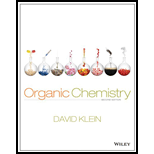
(a)
Interpretation:
The target products for the given different alkene molecules and transformations should be draw and identified.
Concept Introduction:
Reduction reaction: The
Halogenation: The addition of halogen atoms to a
Anti-Markovnikov addition: These rules describe the regioselectivity (particular place in functional group) where the substituent is bonded to a less substituted carbon, rather than the more substituted carbon. This placed is quite unusual as carbon cations which are commonly formed during alkene or alkyne reactions tend to favor the more substituted carbon.
Markovnikov addition: The addition reaction of parotic acids to a different alkene or alkyne, the hydrogen atom of
Sodium amide (
Birch reduction: The conjugated alkynes and benzenes in the presence of sodium metal in liquid ammonia and alkyne produced a non-conjugated diene system. The alkyne involves sodium
(b)
Interpretation:
The target products for the given different alkene molecules and transformations should be draw and identified.
Concept Introduction:
Reduction reaction: The alkenes or alkynes can be reduced to alkanes with
Halogenation: The addition of halogen atoms to a
Anti-Markovnikov addition: These rules describe the regioselectivity (particular place in functional group) where the substituent is bonded to a less substituted carbon, rather than the more substituted carbon. This placed is quite unusual as carbon cations which are commonly formed during alkene or alkyne reactions tend to favor the more substituted carbon.
Markovnikov addition: The addition reaction of parotic acids to a different alkene or alkyne, the hydrogen atom of
Sodium amide (
Birch reduction: The conjugated alkynes and benzenes in the presence of sodium metal in liquid ammonia and alkyne produced a non-conjugated diene system. The alkyne involves sodium
(c)
Interpretation:
The target products for the given different alkene molecules and transformations should be draw and identified.
Concept Introduction:
Reduction reaction: The alkenes or alkynes can be reduced to alkanes with
Halogenation: The addition of halogen atoms to a
Anti-Markovnikov addition: These rules describe the regioselectivity (particular place in functional group) where the substituent is bonded to a less substituted carbon, rather than the more substituted carbon. This placed is quite unusual as carbon cations which are commonly formed during alkene or alkyne reactions tend to favor the more substituted carbon.
Markovnikov addition: The addition reaction of parotic acids to a different alkene or alkyne, the hydrogen atom of
Sodium amide (
Birch reduction: The conjugated alkynes and benzenes in the presence of sodium metal in liquid ammonia and alkyne produced a non-conjugated diene system. The alkyne involves sodium
(d)
Interpretation:
The target products for the given different alkene molecules and transformations should be draw and identified.
Concept Introduction:
Reduction reaction: The alkenes or alkynes can be reduced to alkanes with
Halogenation: The addition of halogen atoms to a
Anti-Markovnikov addition: These rules describe the regioselectivity (particular place in functional group) where the substituent is bonded to a less substituted carbon, rather than the more substituted carbon. This placed is quite unusual as carbon cations which are commonly formed during alkene or alkyne reactions tend to favor the more substituted carbon.
Markovnikov addition: The addition reaction of parotic acids to a different alkene or alkyne, the hydrogen atom of
Sodium amide (
Birch reduction: The conjugated alkynes and benzenes in the presence of sodium metal in liquid ammonia and alkyne produced a non-conjugated diene system. The alkyne involves sodium
(e)
Interpretation:
The target products for the given different alkene molecules and transformations should be draw and identified.
Concept Introduction:
Reduction reaction: The alkenes or alkynes can be reduced to alkanes with
Halogenation: The addition of halogen atoms to a
Anti-Markovnikov addition: These rules describe the regioselectivity (particular place in functional group) where the substituent is bonded to a less substituted carbon, rather than the more substituted carbon. This placed is quite unusual as carbon cations which are commonly formed during alkene or alkyne reactions tend to favor the more substituted carbon.
Markovnikov addition: The addition reaction of parotic acids to a different alkene or alkyne, the hydrogen atom of
Sodium amide (
Birch reduction: The conjugated alkynes and benzenes in the presence of sodium metal in liquid ammonia and alkyne produced a non-conjugated diene system. The alkyne involves sodium
(f)
Interpretation:
The target products for the given different alkene molecules and transformations should be draw and identified.
Concept Introduction:
Reduction reaction: The alkenes or alkynes can be reduced to alkanes with
Halogenation: The addition of halogen atoms to a
Anti-Markovnikov addition: These rules describe the regioselectivity (particular place in functional group) where the substituent is bonded to a less substituted carbon, rather than the more substituted carbon. This placed is quite unusual as carbon cations which are commonly formed during alkene or alkyne reactions tend to favor the more substituted carbon.
Markovnikov addition: The addition reaction of parotic acids to a different alkene or alkyne, the hydrogen atom of
Sodium amide (
Birch reduction: The conjugated alkynes and benzenes in the presence of sodium metal in liquid ammonia and alkyne produced a non-conjugated diene system. The alkyne involves sodium
Want to see the full answer?
Check out a sample textbook solution
Chapter 10 Solutions
Organic Chemistry
 ChemistryChemistryISBN:9781305957404Author:Steven S. Zumdahl, Susan A. Zumdahl, Donald J. DeCostePublisher:Cengage Learning
ChemistryChemistryISBN:9781305957404Author:Steven S. Zumdahl, Susan A. Zumdahl, Donald J. DeCostePublisher:Cengage Learning ChemistryChemistryISBN:9781259911156Author:Raymond Chang Dr., Jason Overby ProfessorPublisher:McGraw-Hill Education
ChemistryChemistryISBN:9781259911156Author:Raymond Chang Dr., Jason Overby ProfessorPublisher:McGraw-Hill Education Principles of Instrumental AnalysisChemistryISBN:9781305577213Author:Douglas A. Skoog, F. James Holler, Stanley R. CrouchPublisher:Cengage Learning
Principles of Instrumental AnalysisChemistryISBN:9781305577213Author:Douglas A. Skoog, F. James Holler, Stanley R. CrouchPublisher:Cengage Learning Organic ChemistryChemistryISBN:9780078021558Author:Janice Gorzynski Smith Dr.Publisher:McGraw-Hill Education
Organic ChemistryChemistryISBN:9780078021558Author:Janice Gorzynski Smith Dr.Publisher:McGraw-Hill Education Chemistry: Principles and ReactionsChemistryISBN:9781305079373Author:William L. Masterton, Cecile N. HurleyPublisher:Cengage Learning
Chemistry: Principles and ReactionsChemistryISBN:9781305079373Author:William L. Masterton, Cecile N. HurleyPublisher:Cengage Learning Elementary Principles of Chemical Processes, Bind...ChemistryISBN:9781118431221Author:Richard M. Felder, Ronald W. Rousseau, Lisa G. BullardPublisher:WILEY
Elementary Principles of Chemical Processes, Bind...ChemistryISBN:9781118431221Author:Richard M. Felder, Ronald W. Rousseau, Lisa G. BullardPublisher:WILEY





